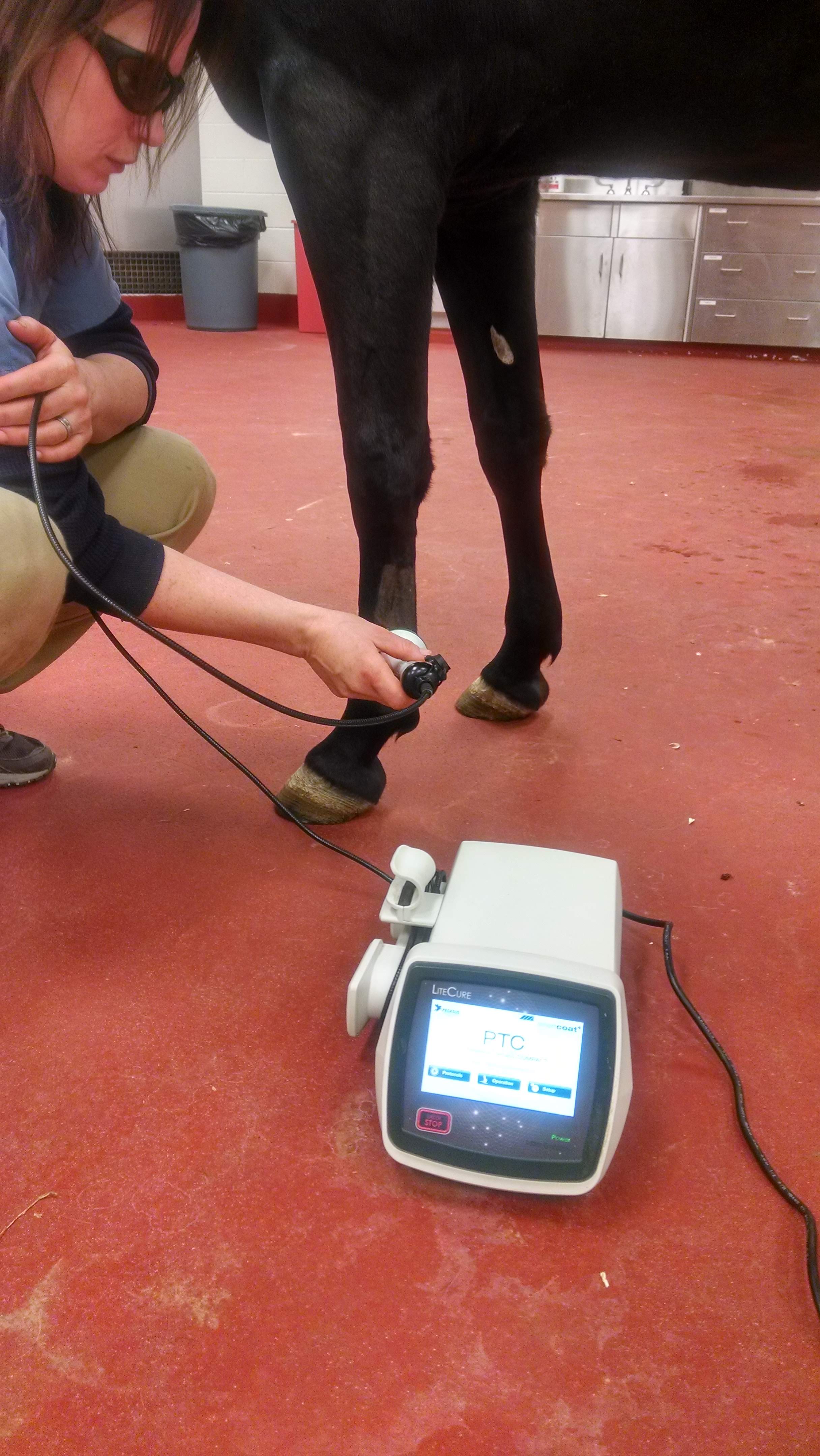Why Equine Therapy is Coming To Be a Preferred Alternative for Emotional Health
Why Equine Therapy is Coming To Be a Preferred Alternative for Emotional Health
Blog Article
Laser Therapy in Horse Treatment: A Modern Method to Improving Horse Health And Wellness
Laser therapy has actually emerged as an essential strategy in equine therapy, making use of focused light power to promote cellular repair work and accelerate recovery from a variety of conditions. By promoting mitochondrial task and boosting ATP production, laser treatment not just enhances blood circulation yet additionally gives considerable discomfort relief.
Recognizing Laser Therapy
Laser treatment, a non-invasive treatment technique, has actually gained substantial grip in equine medicine due to its efficacy in advertising healing and pain alleviation. Improved ATP levels quicken cells fixing procedures and lower swelling, making laser treatment specifically efficient for treating musculoskeletal injuries, wounds, and various other inflammatory problems in horses.
There are several sorts of lasers made use of in equine therapy, each with particular wavelengths and power outputs tailored to different therapeutic requirements. Low-level laser treatment (LLLT), also understood as chilly laser therapy, utilizes reduced power degrees to boost cell feature without causing thermal damages. High-intensity laser treatment (HANDLE), in comparison, utilizes greater power degrees to achieve deeper cells infiltration and even more considerable restorative results.
Veterinarians utilize different laser devices and strategies relying on the problem being treated and the preferred depth of tissue penetration. Proper training and experience are crucial for making certain the safe and efficient application of laser therapy, therefore optimizing its healing capacity while lessening risks.
Benefits for Equine Wellness
With a strong understanding of just how laser therapy works, it is vital to explore its various benefits for equine health and wellness. One of the main advantages is its capacity to increase cells repair service and cell growth. By promoting cellular function, laser treatment advertises faster wound healing and aids in the regrowth of broken cells. This can be particularly useful in minimizing healing times for equines experiencing injuries.
Moreover, laser treatment has actually been revealed to improve circulation, consequently enhancing blood flow to affected locations. Enhanced blood circulation ensures that essential nutrients and oxygen are delivered extra effectively, assisting in the recovery procedure. In addition, laser treatment's anti-inflammatory impacts aid in minimizing swelling and pain, which is crucial for the general health of the horse.
Pain monitoring is an additional significant advantage. By releasing endorphins and blocking pain signals, laser therapy provides effective, non-invasive remedy for both severe and persistent pain. This can add to boosted wheelchair and lifestyle for the pet.
Last but not least, laser therapy is a non-invasive treatment alternative, decreasing the threat of problems associated with more intrusive treatments. Its versatility and effectiveness make it a very useful device in modern-day horse veterinary medicine.
Common Conditions Dealt With

One more widespread condition treated with laser treatment is joint inflammation. Equines dealing with both acute and chronic joint inflammation gain from the anti-inflammatory impacts of laser therapy, which aids to relieve pain and boost joint function. In addition, laser therapy is used in the monitoring of injuries. Whether handling surgical cuts or distressing injuries, the method promotes faster cells repair web work and reduces the danger of infection.
Equine respiratory problems, such as frequent respiratory tract blockage (RAO), likewise react positively to laser treatment. Laser therapy is useful in treating unguis problems, including laminitis and abscesses.
Treatment and Safety And Security
Executing laser treatment in equine treatment involves a careful procedure to make sure both efficiency and safety. Equine Therapy. The procedure starts with a complete veterinary assessment to establish the viability of laser treatment for the horse's certain condition. When deemed suitable, the treatment location is prepared by cleansing and, if necessary, clipping the hair to boost laser penetration
The specialist has to pick the correct sort of laser, normally a low-level laser (LLLT) or a high-power laser (HPL), depending on the condition being dealt with. The laser device is then calibrated to the suitable wavelength, power, and duration settings. During the application, the practitioner relocates the laser over the targeted area in an organized manner, making certain constant and also exposure.
Security procedures are purely stuck to, including making use of protective eyeglasses for both the practitioner and the equine. Furthermore, it is essential to keep track of the equine for any type of indications of discomfort or negative reactions throughout the treatment. Post-treatment, the steed is commonly provided a duration of remainder to permit the healing impacts to manifest.

Future of Horse Laser Therapy
As improvements in veterinary medication continue to unravel, the future of equine laser treatment holds significant promise. Arising modern technologies and much deeper scientific insights are established to refine and expand the applications of laser therapy for equines.
Moreover, recurring research into the molecular and cellular mechanisms of laser therapy will likely produce enhanced methods customized to particular conditions, enhancing efficiency this post and decreasing therapy times. Customized treatment plans based upon genetic and biochemical pens could come to be a reality, ensuring that each horse obtains one of the most proper and effective care.
Furthermore, regulative improvements and standardization of methods will improve the reputation and reliability of laser treatment in equine method. Equine Therapy. As these innovations remain to emerge, equine laser treatment is positioned to become a crucial element of veterinary care, offering boosted healing and improved top quality of life for equines globally
Verdict

Report this page